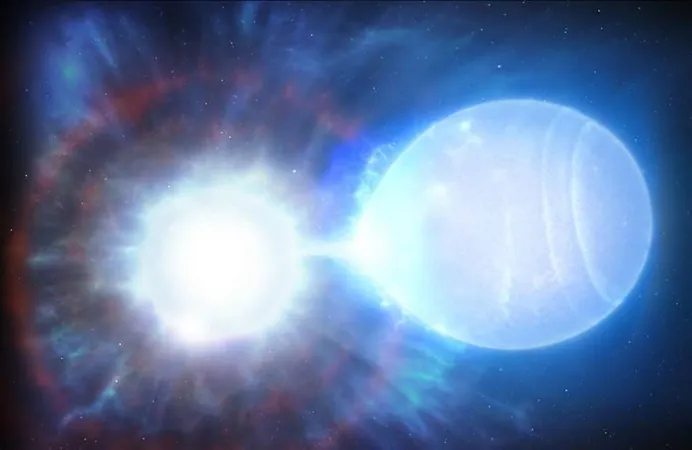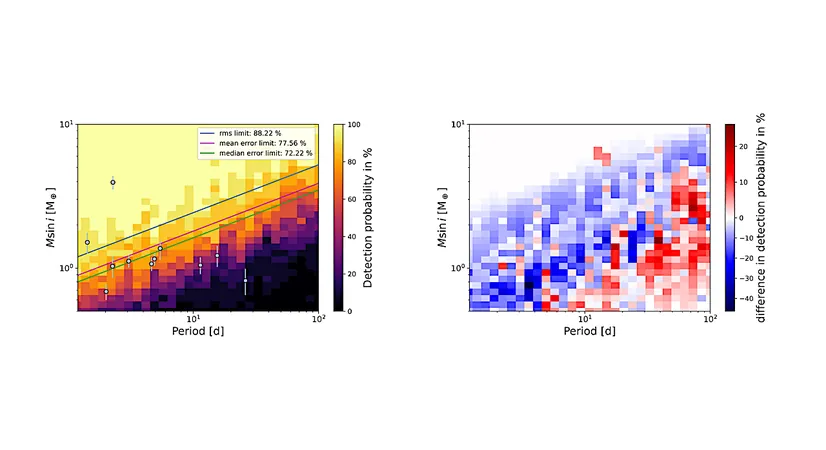
Extraordinary Binary Star System Poised for Magnificent Supernova Eruption in 23 Billion Years!
2025-04-05
Author: Rajesh
Astronomers from the University of Warwick have made a groundbreaking discovery about a binary star system located approximately 150 light years away in our very own Milky Way galaxy. This intriguing pair of stars is on a collision course that will culminate in a type Ia supernova explosion—a cosmic spectacle that will shine ten times brighter than the Moon! However, sky-watchers will have to wait a staggering 23 billion years before they will witness this celestial event.
What is a Type Ia Supernova?
Type Ia supernovae are critical to astrophysics as they function as “standard candles,” helping astronomers measure distances across the universe. These massive explosions occur when a white dwarf—a remnant core of a star—absorbs enough mass from a companion star, causing it to explode. This phenomenon is predicted to account for a majority of the type Ia supernovae observed in the galaxy.
First of Its Kind Discovery
Lead researcher James Munday expressed his enthusiasm, stating, “Finding such a significant local binary system was thrilling—it's an indication of how abundant these massive white dwarf pairs might actually be.” The implications of this research are profound: by identifying this binary system, astronomers can improve their understanding of the mechanisms behind supernova explosions, which remain one of the universe's great mysteries.
On a Collision Course
Working alongside an international team, the astronomers utilized powerful optical telescopes, including data from the Hubble Space Telescope, to determine the proximity of the stars within this binary system. Remarkably, the two stars are separated by a distance that is just 1/60th of the space between Earth and our Sun—a discovery that marks them as the nearest known progenitors of a type Ia supernova.
As the stars spiral closer, currently on a 14-hour orbital cycle, their proximity will increase dramatically, ultimately reducing their orbit to a mere 30 to 40 seconds. This gravitational pull will eventually lead to a spectacular quadruple detonation event when they collide. First, the surface of the white dwarf will erupt, followed by its core, creating a chain reaction that releases energy equivalent to a thousand trillion trillion nuclear bombs. Such a cataclysmic explosion will obliterate the system, leaving behind only remnants.
The Future of Astrophysical Research
Despite the awe-inspiring future explosion, experts assert that Earth and its inhabitants are in no danger from this distant cosmic event, rendering this discovery an exciting scientific milestone rather than a cause for concern. The team's co-author, Dr. Ingrid Pelisoli, emphasized that the investigation into type Ia supernova progenitors is ongoing, promising more groundbreaking findings on the horizon.
In a convergence of astrophysical inquiry and cosmic wonder, this research is gradually unraveling the complexities behind these stellar explosions. The findings will be detailed in the upcoming paper titled “A Super-Chandrasekhar Mass Type 1a Supernova Progenitor at 49 pc Set to Detonate in 23 Gyr,” set to publish on April 4, 2025, in *Nature Astronomy*.
Prepare yourself for the ultimate cosmic fireworks display, but remember: it'll be a long wait of 23 billion years!




 Brasil (PT)
Brasil (PT)
 Canada (EN)
Canada (EN)
 Chile (ES)
Chile (ES)
 Česko (CS)
Česko (CS)
 대한민국 (KO)
대한민국 (KO)
 España (ES)
España (ES)
 France (FR)
France (FR)
 Hong Kong (EN)
Hong Kong (EN)
 Italia (IT)
Italia (IT)
 日本 (JA)
日本 (JA)
 Magyarország (HU)
Magyarország (HU)
 Norge (NO)
Norge (NO)
 Polska (PL)
Polska (PL)
 Schweiz (DE)
Schweiz (DE)
 Singapore (EN)
Singapore (EN)
 Sverige (SV)
Sverige (SV)
 Suomi (FI)
Suomi (FI)
 Türkiye (TR)
Türkiye (TR)
 الإمارات العربية المتحدة (AR)
الإمارات العربية المتحدة (AR)